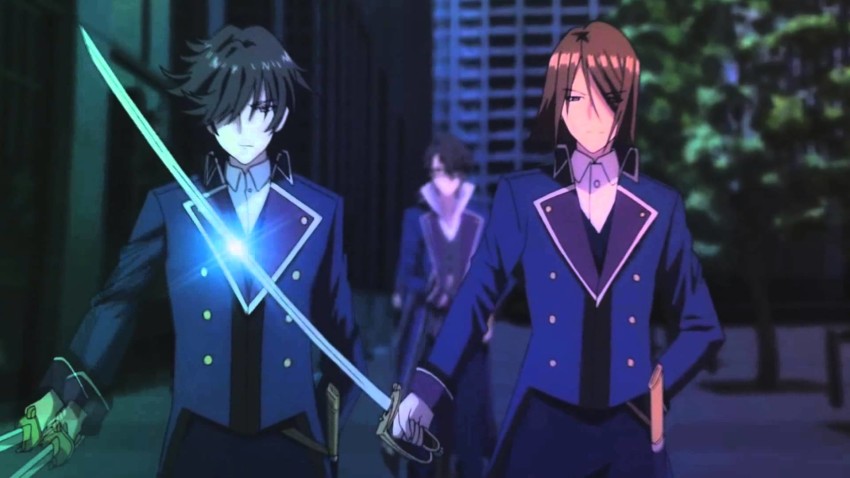K: Missing Kings
April 7, 2019 · 0 comments
By Meghan Ellis.
 You might remember K Project as the best skateboarding anime that’s not actually about skateboarding. Or for its gratuitous use of stained glass backgrounds and chromatic phenomena. But since the series and its associated projects are an exploration of how to tell a story in colour, this indulgence is something we can forgive. K: Missing Kings is the next stage in the narrative, and it takes the animation quality that drove people to laud the power of sixty frames per second and gives it the movie budget treatment. Right from the start we’re treated to an explosion (literally) of lights, colours, and prismatic effects: this is what a studio flexing their muscles can do, and creators GoHands aren’t afraid to show it.
You might remember K Project as the best skateboarding anime that’s not actually about skateboarding. Or for its gratuitous use of stained glass backgrounds and chromatic phenomena. But since the series and its associated projects are an exploration of how to tell a story in colour, this indulgence is something we can forgive. K: Missing Kings is the next stage in the narrative, and it takes the animation quality that drove people to laud the power of sixty frames per second and gives it the movie budget treatment. Right from the start we’re treated to an explosion (literally) of lights, colours, and prismatic effects: this is what a studio flexing their muscles can do, and creators GoHands aren’t afraid to show it.
The story of K: Missing Kings picks up a year after the end of the first season of the anime – unusually, a standalone movie that’s neither recap nor prequel. The plot follows Silver clansmen Kuroh Yatogami and Neko as they search for their titular missing king, and you’ll need to watch it to understand the context of the sequel series K: Return of Kings. What’s most important to remember is that colour, here, isn’t the dreamlike backdrop of most anime: it’s the rules by which the characters play and on which the very world itself operates. K: Missing Kings doesn’t so much have a colour scheme as it does an entire palette, a visual and narrative cipher through which the story unfolds.
Watch it with this prismatic storytelling in mind. Take our ominous introduction to the Green Clan, a new force in the conflict we saw play out in the first series. Aside from taking over the title credits – appearing in a discordant, sickly green on a computerised screen – they appear in the reflections on Blue King Reisi Munakata’s glasses, the lowlights on the buildings, the saturated lightning. If you weren’t sure who the antagonists were, then these jarring, colourfully mismatched frames in Missing Kings’ meticulously plotted world tell you.
Director Shingo Suzuki isn’t new to warping the boundaries of parallel visual styles, with credits including Puella Magi Madoka Magica and Noein: To Your Other Self showcasing how he pushes anime to stylistic extremes to tell us what we need to know. But it’s his work on the Mardock Scramble series that’s most reminiscent of K: Missing Kings’ tonal storytelling, and elements of that cyberpunk, seedy underworld atmosphere surface in our characters’ gangland playground.
As for the characters themselves, such an experimental gradient might threaten to overwhelm a less distinctive cast. Of course, where the K Project has style it has it in spades: protagonists and antagonists alike take the over the top design tropes of recent sci-fi anime and really run with them. Heterochromatic cat girls and moody near-samurai with unassailable fringes might not be for everyone, yet K: Missing Kings is determined to make it work.
But the most impressive thing about GoHands’ technicolour world is that it manages to make CG look, if not good, then certainly not out of place. The plasticky motion of CG vehicles and set pieces works because everything in the world of K: Missing Kings borders on the surreal – the spectrum of colour, the everything-goes soundtrack and the deliberate archetypal of each Clan is hardly coherent – and that’s kind of the point. Who cares about how a CG car moves when there’s a gargantuan Sword hanging perilously in the sky?
And that’s what the movie does best. K: Missing Kings is an urban fantasy with all the madness of a city drawn right into the storyboard; it’s up to us to translate.
K: Missing Kings is released in the UK by Anime Limited.
Leave a Reply